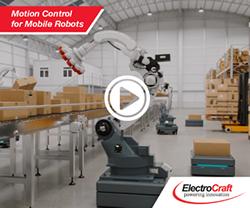America may miss out on the next industrial revolution
Are Robotics a Key to the Next Phase of Recycling?
Crashing Drones Into Test Dummies for Safety
Miso Robotics Unveils "Flippy" in CaliBurger Kitchen, Plans Worldwide Rollout
Brain-controlled robots
Table tennis playing robot breaks world record - Japan Tour
Cobalt Robotics Introduces a (Mostly) Autonomous Mobile Security Robot
Dyson backs Britain plc with $2.5bn AI and robotics investment
Introducing Handle from Boston Dynamics
Tech firms keep expanding 'Robotics Row,' Pittsburgh's mini Silicon Valley
NXT Robotics Unveils Rugged All-Terrain, All-Weather Outdoor Security Robot
Rise of Robots: Boon for Companies, Tax Headache for Lawmakers
Six-legged robots faster than nature-inspired gait
EU wants ethical standards for robotics
Exhibition Charts 500 Years of Evolution of Robots
Records 571 to 585 of 771
First | Previous | Next | Last
Mobile Robots - Featured Product

